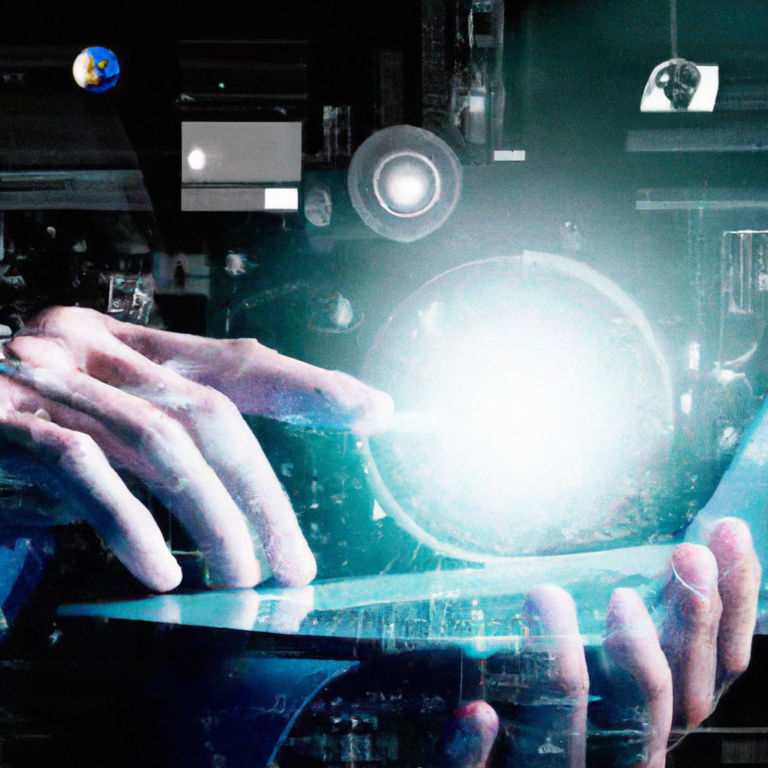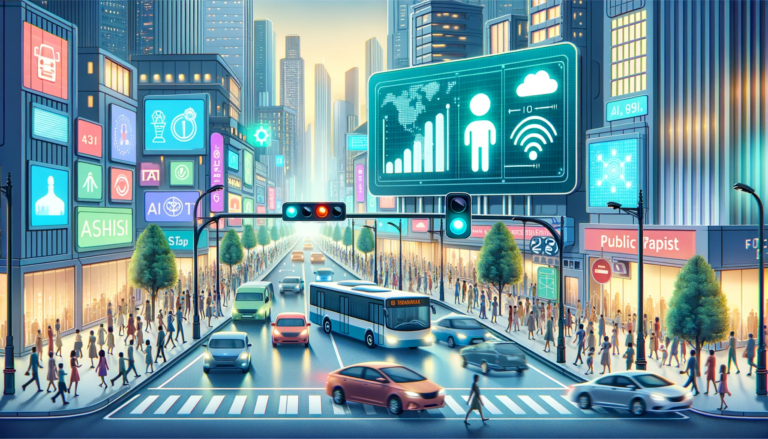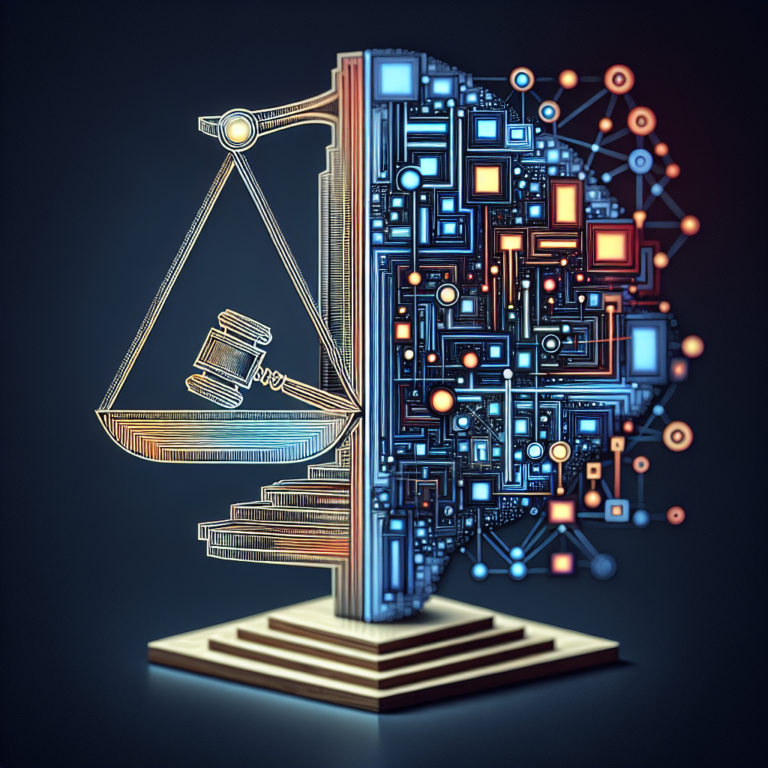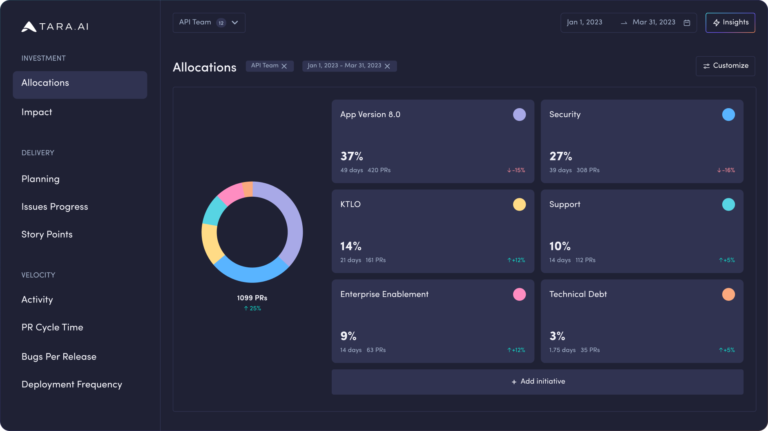
Artists have always sought new ways to express themselves, pushing the boundaries of creativity and innovation. With the rise of artificial intelligence (AI), a whole new world of artistic possibilities has opened up. In this article, you will discover the fascinating ways in which AI can be utilized to create art, from generating abstract paintings to composing intricate musical compositions. Get ready to embark on a journey where technology and imagination intertwine to produce stunning works of art.

Choosing the Right AI Tools To Create Art
Artificial Intelligence (AI) has revolutionized numerous industries, including the field of art. Whether you are an aspiring artist or an established professional, incorporating AI tools into your creative process can open up exciting new possibilities. However, with the plethora of AI tools available today, choosing the right one can be a daunting task. To make an informed decision, it is crucial to have a solid understanding of the basics of AI and the specific tools designed for art creation.
Understanding the Basics of AI
Artificial Intelligence, in simple terms, refers to the development of computer systems that can perform tasks that would typically require human intelligence. AI encompasses various techniques, such as machine learning and deep learning, which allow computers to analyze vast amounts of data and learn from them. These algorithms enable AI models to generate outputs that mimic human creativity.
Exploring Different AI Art Creation Tools
With the rapid advancements in AI technology, a wide range of AI art creation tools have emerged. Some tools focus on transforming existing artwork, while others leverage AI to generate entirely new art pieces. Exploring different tools would give you a sense of the capabilities and limitations of each. Some popular AI art creation tools include DeepArt, DeepDream, and RunwayML. Each tool has its own unique features and algorithms, so it’s important to experiment and find a tool that aligns with your artistic goals.
Considering Your Artistic Style and Objectives
When choosing an AI art creation tool, it’s essential to consider your artistic style and objectives. Different AI models and algorithms excel in different artistic areas, such as painting, photography, or digital art. Some tools are designed to replicate the styles of famous artists, while others allow for more experimental and abstract creations. By understanding your artistic style and objectives, you can narrow down the options and choose an AI tool that aligns with your creative vision.
Preparing Your Art Assets
Before diving into the world of AI-generated art, it is crucial to properly prepare your art assets. This includes organizing and sorting your existing artwork, gathering reference material for inspiration, and converting your physical or analog art assets into digitized formats.
Sorting and Organizing Your Artwork
If you already have a collection of artwork, it’s important to sort and organize your pieces to ensure easy access and retrieval. This step will enable you to easily select and feed your artwork into AI models for further exploration and experimentation. By organizing your artwork by themes, styles, or mediums, you can easily navigate through your collection and make informed choices during the AI art creation process.
Gathering Reference Material
Reference material serves as a valuable source of inspiration and guidance when using AI to create art. It can include photographs, images, or even pieces of artwork that resonate with your desired artistic direction. By gathering a diverse range of reference materials, you can provide the AI model with a broad spectrum of visual information for it to learn from and generate unique outputs.
Converting Art Assets to Digitized Formats
To utilize AI tools effectively, it may be necessary to convert your physical or analog art assets into digitized formats. This involves scanning or photographing your artwork at high resolution to capture its details accurately. Digitizing your art assets makes it easier to manipulate and interact with them using AI tools. Additionally, it allows for seamless integration of your traditional art with AI-generated outputs, enabling a blend of the old and the new in your artistic creations.
Training the AI Model
To leverage AI in your art creation process, you need to train the AI model using suitable data and inputs. This involves selecting an appropriate AI model, preparing the training data, and providing the model with artistic inputs to learn from.
Selecting a Suitable AI Model
There are various AI models available, each designed for specific purposes and artistic styles. Choosing the right model depends on the type of art you aim to create and the desired level of control you want to maintain. Some AI models focus on style transfer, while others excel in generating completely novel artistic outputs. Understanding the capabilities and limitations of different AI models will help you make an informed decision that aligns with your creative vision.
Preparing the Training Data
The quality and diversity of the training data play a crucial role in the AI model’s ability to generate art that meets your expectations. It is essential to curate a dataset that includes a wide range of art styles and techniques while aligning with your specific artistic objectives. By exposing the AI model to a diverse set of inputs during the training phase, you can enhance its ability to generate unique and innovative outputs.
Training the Model with Artistic Inputs
Once you have selected a suitable AI model and prepared the training data, it is time to train the model using artistic inputs. This involves providing the model with examples of art pieces that reflect the style and aesthetics you want to incorporate in your own creations. By exposing the model to your artistic inputs, it can analyze and learn the underlying patterns and techniques, enabling it to generate outputs that align with your artistic vision.
Generating Art with AI
After training the AI model, it’s time to start generating art using AI techniques. This involves applying the AI model to create new artwork, experimenting with different settings and parameters, and evaluating and selecting the best outputs.
Applying AI Techniques to Generate Art
Using AI techniques, you can generate art that combines your artistic style with the model’s learned behaviors. By feeding the AI model with input images or artistic prompts, it can generate new artwork that reflects the style and aesthetics drawn from the training data. AI techniques can offer a fresh perspective and inspire new ideas, allowing you to explore artistic possibilities that may have been previously uncharted.
Experimenting with Different Settings and Parameters
To fully exploit the potential of AI in art creation, it is essential to experiment with different settings and parameters. AI tools usually provide various options and controls that allow you to fine-tune the outputs according to your preferences. By exploring different combinations of settings, parameters, and input data, you can unlock new levels of creativity and produce art pieces that are truly unique and expressive.
Evaluating and Selecting the Best Artistic Outputs
Not every output generated by AI will meet your artistic expectations. It is crucial to evaluate and select the best artistic outputs that resonate with your vision and objectives. This requires a keen eye and an understanding of your artistic style. By carefully reviewing the generated outputs and comparing them against your desired outcomes, you can identify the pieces that have the highest artistic merit and showcase your unique creative expression.

Refining and Enhancing the AI-Generated Art
While AI-generated art can be visually stunning, it often requires human intervention to refine and enhance the final result. This step involves reviewing and analyzing the generated artwork, iteratively refining the artistic outputs, and adding personal touches and final touch-ups to create a cohesive and polished piece.
Reviewing and Analyzing the Generated Artwork
After generating art using AI techniques, it is crucial to review and analyze the artwork generated by the model. This involves critically evaluating the composition, aesthetics, and overall artistic quality of the outputs. By carefully examining each piece, you can identify areas that require refinement or enhancement. This critical analysis can help you better understand the strengths and weaknesses of the AI model and guide your subsequent artistic decisions.
Iteratively Refining the Artistic Outputs
AI-generated art often benefits from iterative refinement to achieve a desired artistic result. This typically involves making incremental changes and adjustments to the composition, colors, and other visual elements of the artwork. It may also involve experimenting with different AI tools or techniques to enhance specific aspects of the piece. By iterating and refining the outputs, you can gradually mold the artwork into a more refined and expressive form that aligns with your artistic vision.
Adding Personal Touches and Final Touch-ups
While AI can assist in the generation and refinement of artwork, adding personal touches and final touch-ups is an essential step in infusing your artistic style and signature into the piece. This involves leveraging traditional art techniques or using digital tools to add details, textures, or other elements that enhance the overall visual impact of the artwork. These personal touches and final touch-ups contribute to the uniqueness and authenticity of the piece, showcasing the fusion of human creativity and AI assistance.
Exploring Collaborative Approaches with AI
Collaboration between humans and AI can result in exciting and innovative artistic possibilities. By embracing AI as an artistic partner or co-creator, artists can explore new avenues of creativity and push the boundaries of traditional artistic practices.
Collaborating with AI as an Artistic Partner
Rather than solely relying on AI as a tool, collaborating with AI as an artistic partner can yield unexpected and inspiring results. This involves actively engaging with the AI model during the creative process, allowing it to contribute ideas, generate suggestions, or propose alternate artistic directions. By embracing the collaboration, you can tap into the computational power and artistic insights of AI to create art that stretches the boundaries of human imagination.
Utilizing AI as an Artistic Co-creator
Utilizing AI as an artistic co-creator involves integrating AI into the creative workflow as an equal partner. This approach empowers the AI model to actively contribute to the art creation process, generating outputs that prompt further artistic exploration. By embracing AI as an equal partner, artists can embrace the unexpected and embrace the serendipity of AI-generated ideas, leading to innovative and engaging artistic outcomes.
Combining Human and Machine Ingenuity
The collaboration between humans and AI allows for a harmonious synthesis of human creativity and machine ingenuity. By leveraging the computational power and learning capabilities of AI, artists can augment their own artistic skills and expand their creative boundaries. This combination of human and machine ingenuity can lead to the development of entirely new artistic styles, techniques, and aesthetics that push the boundaries of traditional art creation.
Ethical Considerations in AI Art Creation
While AI offers exciting possibilities for artistic creation, it is essential to consider the ethical implications associated with AI-generated art. This includes ensuring respect for artistic traditions and originality, as well as addressing issues of bias and fairness.
Understanding the Ethical Implications
AI-generated art raises questions about originality, authorship, and authenticity. It is important to acknowledge the potential ethical implications of using AI to create art and to critically examine how AI intersects with the traditional notions of artistic creation. By understanding these ethical implications, artists can make informed decisions and ensure that their own creative practices are aligned with ethical standards.
Ensuring Respect for Artistic Traditions and Originality
Artistic traditions play a significant role in shaping the cultural fabric of societies. When using AI in art creation, it is crucial to ensure that the outputs respect and acknowledge these traditions while also fostering innovation. Artists should be mindful of using AI in an original and transformative manner that builds upon, rather than replicates, existing artistic works. By doing so, artists can create art that pays homage to tradition while embracing technological advancements.
Addressing Issues of Bias and Fairness
AI algorithms are trained on datasets that can inadvertently perpetuate biases present in the training data. It is important to address potential biases and ensure fairness when utilizing AI in art creation. This involves carefully curating the training data to include diverse perspectives and actively working to identify and mitigate biases in the AI model’s outputs. By embracing fairness and inclusivity, artists can leverage AI to create art that is representative and enriching for all.
Overcoming Challenges and Limitations
While AI tools have immense potential, it is crucial to acknowledge and navigate the challenges and limitations associated with AI art creation. This includes technical limitations, the surrender of creative control to AI, and striking a balance between the artist’s vision and the assistance provided by AI.
Navigating Technical Limitations of AI Art
While AI has made significant progress in replicating human creativity, it is important to remember that it still has certain limitations. AI models may struggle with complex artistic techniques or struggle to fully interpret abstract artistic concepts. Artists should be aware of these technical limitations and adapt their creative process accordingly. By understanding these limitations, artists can leverage AI effectively while also embracing traditional artistic techniques and approaches.
Coping with Creative Control and Surrendering to AI
When employing AI in art creation, artists must find a balance between maintaining creative control and surrendering to the capabilities of AI. Artists may find it challenging to let go of full control and trust AI’s suggestions or generated outputs. It is essential to embrace the serendipity and unpredictability that AI can offer while still retaining the artist’s vision and intent. By finding a harmonious balance, artists can harness the power of AI without compromising their creative integrity.
Balancing the Artistic Vision with Technological Assistance
AI should be viewed as a tool that assists and enhances the creative process rather than replacing human creativity altogether. Artists should continually strive to strike a balance between their artistic vision and the technological assistance offered by AI. By viewing AI as a complementary tool, artists can leverage its capabilities to explore new artistic possibilities while maintaining their own artistic voice and integrity.
Legal Aspects of AI-Generated Art
The rise of AI-generated art raises crucial legal considerations, including copyright and ownership, licensing, and intellectual property rights. Artists and creators should be aware of the legal aspects associated with AI-generated art to protect their rights and ensure fair and ethical practices.
Copyright and Ownership of AI-Generated Artwork
Determining copyright and ownership of AI-generated artwork can be complex. In many legal jurisdictions, the default position is that the creator of an artwork is the person who made the creative choices. However, when AI is involved in the creative process, questions arise regarding the level of involvement by the human artist. It is important for artists to understand copyright laws in their jurisdiction and consider clarifying the ownership and rights in AI-generated art through contractual agreements or legal consultations.
Licensing and Commercialization Opportunities
AI-generated art presents new opportunities for licensing and commercialization. Artists can explore the potential of licensing their AI-generated artwork for various purposes, such as prints, merchandise, or digital exhibitions. However, it is crucial to carefully consider licensing agreements, ensuring that the terms are fair and protect the artist’s rights. Artists should also be aware of potential challenges in proving the originality and uniqueness of AI-generated artwork when seeking legal protection or enforcing licensing agreements.
Intellectual Property Considerations
AI-generated art often involves the use of existing works, training data, or reference materials. Artists must be mindful of intellectual property rights and copyright laws when utilizing AI tools. It is important to obtain appropriate permissions or licenses for using copyrighted materials and to ensure that the AI-generated outputs do not infringe upon the rights of others. By upholding intellectual property considerations, artists can engage with AI tools in a legally responsible and respectful manner.
Impacts of AI in the Art World
The integration of AI in the art world has profound implications for artistic creation, the art market, and the concept of authorship and artistic expertise.
Revolutionizing Artistic Creation and Exploration
AI has the potential to revolutionize artistic creation and exploration. By enabling artists to access vast amounts of data, generate new ideas, and collaborate with AI models, artists can push the boundaries of traditional artistic practices. AI offers novel perspectives and opens up new possibilities, allowing artists to discover unexplored artistic territories and create artworks that were previously unimaginable.
Transforming the Art Market and Value Chains
The integration of AI in the art market is reshaping various aspects of the industry, from art curation and exhibition to sales and distribution. AI tools offer new ways of discovering and promoting art, allowing for personalized recommendations and enhanced accessibility. Furthermore, AI-generated art challenges existing value structures and notions of scarcity, fueling discussions about the value placed on human-made art versus AI-generated art.
Shaping the Concept of Authorship and Artistic Expertise
AI-generated art challenges traditional notions of authorship and artistic expertise. It raises questions about the role of the human artist in the creative process and the level of influence AI has on the final artwork. As AI becomes more prevalent in art creation, it is imperative to engage in meaningful discussions and reflections on the definition and recognition of artistic authorship. This will help shape a deeper understanding of how AI impacts the concept of artistic expertise and authority in the art world.
In conclusion, AI tools offer immense potential for artists to explore new artistic territories, enhance creativity, and push the boundaries of traditional art practices. By understanding the basics of AI, selecting the right AI tools, preparing art assets, training the AI model, and refining the outputs, artists can harness the power of AI in their creative process. However, it is essential to consider the ethical, legal, and practical implications associated with AI-generated art. By navigating these challenges and seizing the opportunities presented by AI, artists can create groundbreaking and captivating artworks that blend human ingenuity with the computational power of AI.






